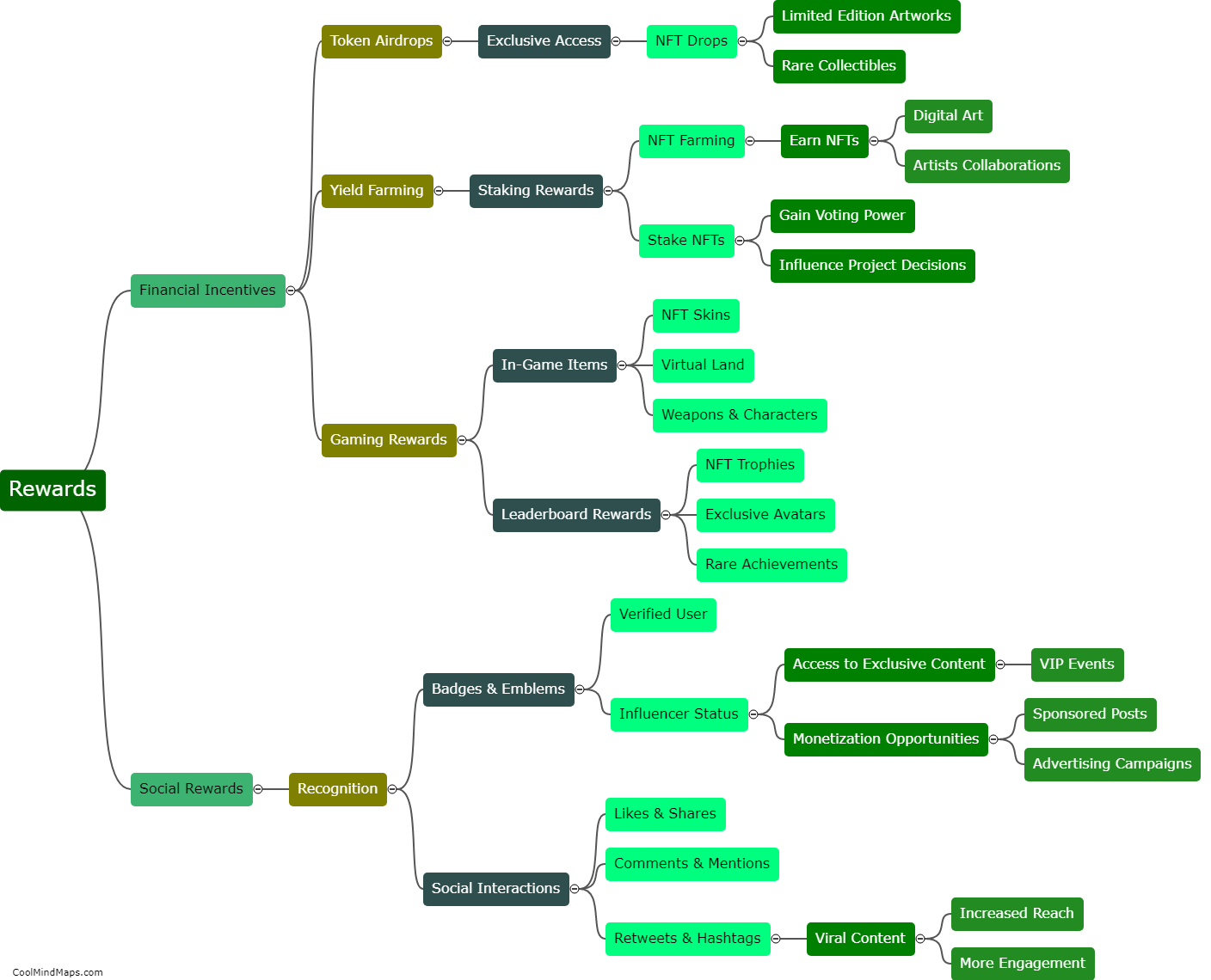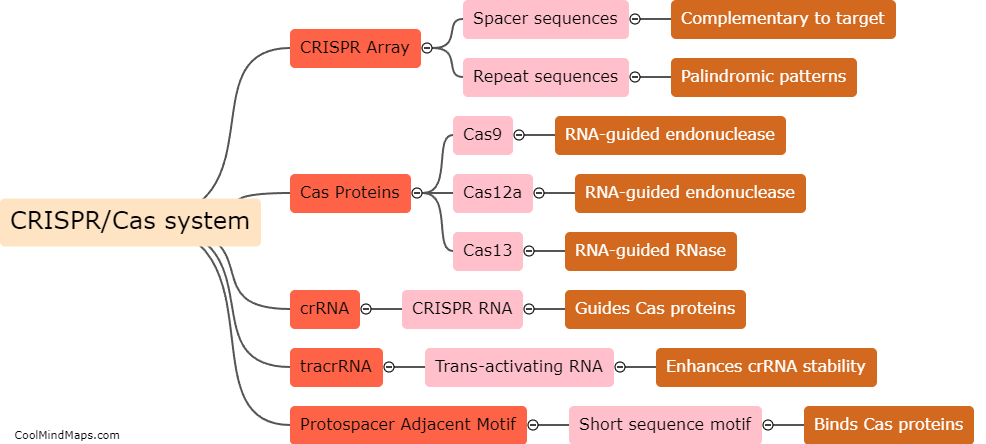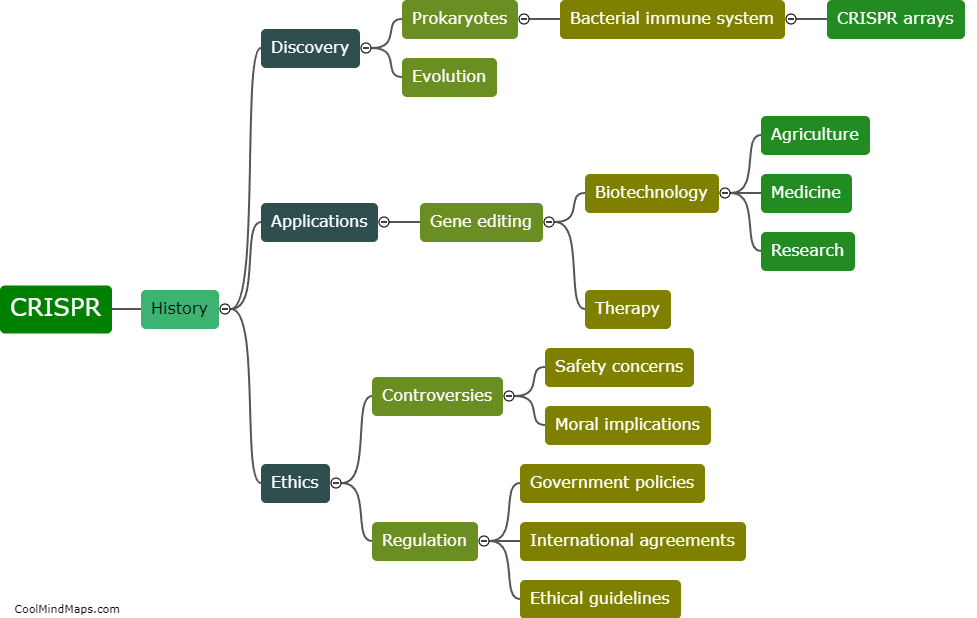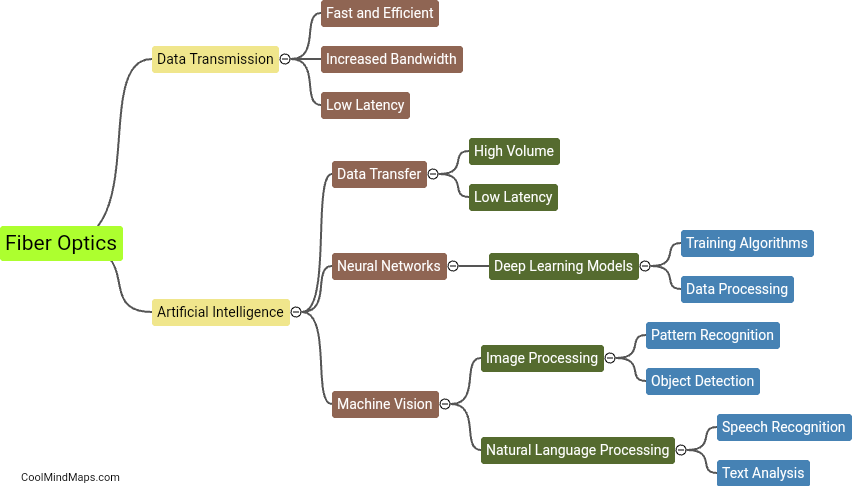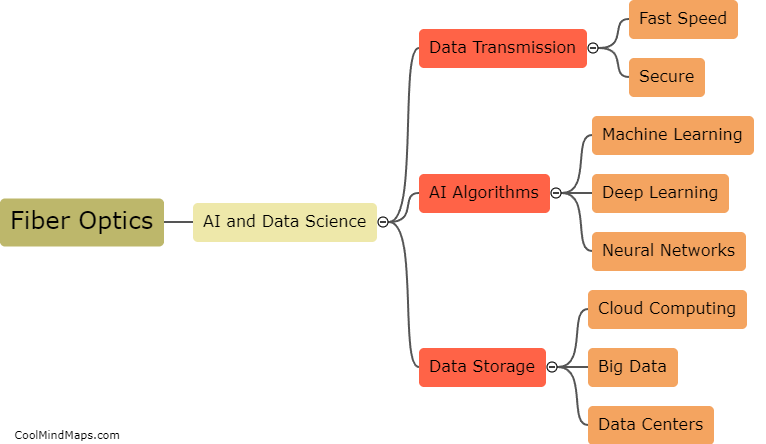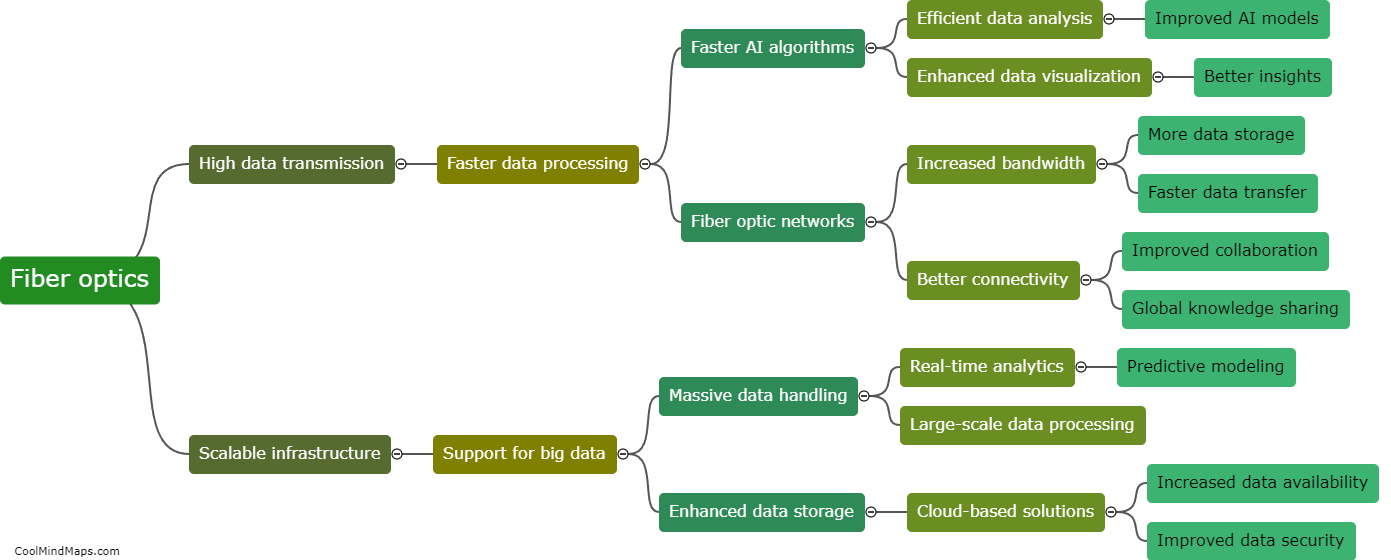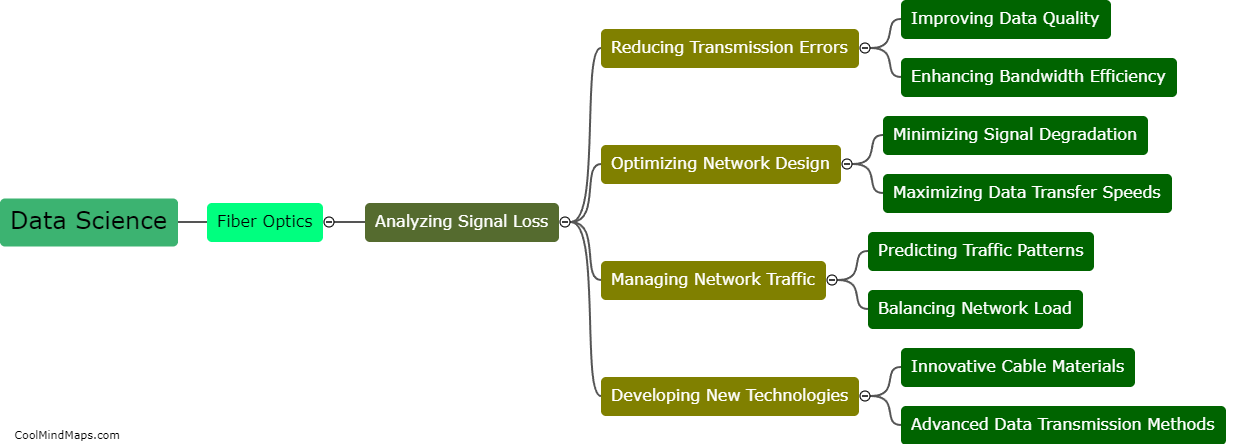How does CRISPR work?
CRISPR, or clustered regularly interspaced short palindromic repeats, is a revolutionary gene-editing technology that allows scientists to edit DNA with unprecedented precision. The system is composed of two main components: a guide RNA molecule and an enzyme called Cas9. First, the guide RNA is engineered to complement a specific target sequence of DNA, guiding Cas9 to the desired location. Once there, Cas9 acts like a pair of molecular scissors, cutting the DNA strand. This cut triggers the cell's natural DNA repair mechanisms, which can be harnessed to introduce desired changes into the DNA sequence. Scientists can either delete, insert, or replace specific DNA segments, thereby modifying the genetic code of an organism. The beauty of CRISPR lies in its simplicity and accuracy, making it a powerful tool with immense potential in various fields including medicine, agriculture, and biotechnology.

This mind map was published on 10 November 2023 and has been viewed 83 times.



